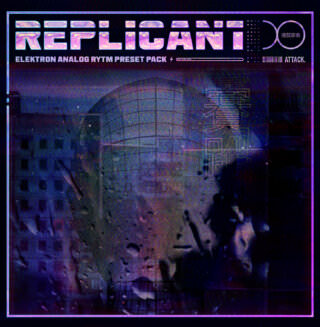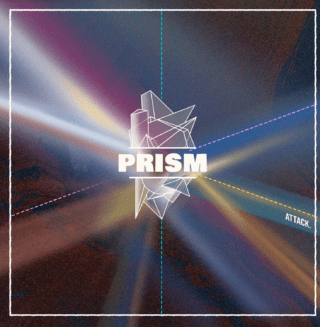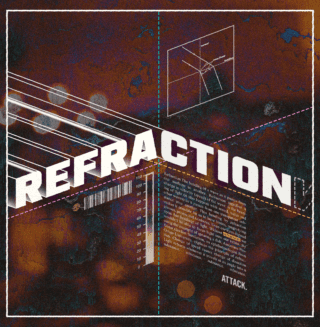Read an excerpt from a panel conversation between Kyoka and Beate Kunath from this year’s Signals Festival.
Brought to you by the Catalyst Institute, Signals Festival at the end of October delivered a two-day showcase of topical electronic music content. Held at the Funkhaus in Berlin, the original home of Superbooth, we caught an interesting discussion, supported by Nadia Says (Your Moms Agency and Elektron) between Kyoka and Beate Kunath. The latter is well known as the director of the documentary Raw Chicks, a pioneering film about female producers in Berlin.
Speaking with Kyoka, the two discussed Kyoka‘s new show at Mutek Tokyo, her new live performance using Elektron and neuroscience.
Beate Kunath: We’ve just watched an extract of a documentary I released in 2017 about 11 music producers living in Berlin. I had the idea of making this film because a partner and I created an event called RAW CHICKS and we started a platform where we had a strong focus on live acts. Kyoka was actually our very first live act! So I’m very happy today to talk about your new ideas and your development.
Kyoka: Very interesting and funny to see myself. How many years ago was this?
The filming was seven years ago…
Yeah. I did not know I was such an abstract person. What I say is like “what you were talking about”? It’s very nice because without seeing this, I would not notice how much I’m changed or how I’ve grown up. When you do this documentary thing again, please ask me to be in it, and after 10 years I can double-check how I was again.
I promise! Every portrait in this film has a different focus, and when I met you Kyoka, you were in the middle of producing a record. At that time, you had a mixer, a laptop, and some equipment to make some sounds and all these little microphones?
The mics. Yeah, I still use them. The piezo is kind of inside of microphones, speakers, a lot of materials is made with piezo. Just having them as direct input to a mixer could provide a variety of sounds. And I would call this my modular synthesizer… seriously, it’s modular.
Nice. You’re the only artist I have seen working with these microphones. And you also had one on the foot?
Yes, one day I wondered why am I not using my feet? So I just put that piezo on my foot, and it was like “Boon”. It’s great for improvisation; everywhere has a bit of a different sound, but often in a club situation, I could set one for the floor shaking and one to create harsh noise.
I could basically have an automatic instrument, it was so colorful. Plus I could put it in my pocket, just like a USB DJ!
Sure! And when I shot the film, I found that it is very different if you work in the studio or if you play on stage. You have some prepared tracks but you also improvise with the tracks live?
Prepared sound is for safety but it’s not the only reason. Sometimes in the studio or anywhere really, I can get very a special sound I cannot recreate later. So in that case, why not use it?
Some sounds I heard in your movie, are sound I have never heard before or after. Could you do me a favour? I wanted to ask you for the sound file so I could make a new song. So yeah, a lot of sounds I like are very spontaneous.

Sure, I can look into my archive and search for this old file.
Actually, it’s kind of a beautiful thing that, by chance, I can create a nice sound and atmosphere in a venue or in a different situation. But too often while I play, I don’t record these sounds at all. So I can never recreate them anymore, such a pity. So if I bring something I have prepared, it’s kind of my lucky sound that I can replay again.
I realized if I input a 50-hertz sine wave in my self made preset it resulted in music that touched my heart. Since then, I have tried to establish a variety of self-templates to make music along the brain system
I see, yes, you have always explained that you don’t really like ready-made samples and that instead, you do your own field recording. So I wonder with your new project, what kind of field recording are you capturing?
So far, I would say I still do my piezo thing and field recording, but including a different way of capturing sounds as I talked about earlier. For example, my website URL is ufunfunfufu.com, and my previous album name is also Ufunfunfufu.
At the time I thought it sounded funny, but I just went with it. But now I have more life experience, I start to have questions why I wanted to pick ufunfunfufu. Why did I feel funny and what kind of output signal, or what kind of chemistry happened in my brain? I reviewed my past reasoning, thinking whether it was about emotion, or maybe without a reason.
All this to say that currently, I start to review what could have been the reasons for my artistic choices. I get a deeper understanding of things not only about myself but about different situations and phenomena. For example, when the COVID pandemic started, I did not perform at festivals, so I had more time at home to study physics or the human brain. It was fun and I was happy that I could do such things.
Also because of the pandemic, we got a lot of streaming programs or online meetings, and a lot of the days I did not meet people in real life, but still with video calls. Despite this I could be impressed by how we affect each other. And I was thinking about why we affect each other and why our emotions get stirred. And once again I realized it’s a brain system and so I tried to learn more about that.
And you went to meet with scientists to disucss this, right?
This new chapter of my artistic life felt uplifting, and for the first year, I did not meet scientists because it was more of a hobby. Until recently I kept studying by myself, reading about theory and then one day I got an offer to make a one-minute music piece for a media art festival in Japan, and they asked me to make some kind of ceremony music.
In the past, I would create music in a dark room setup, but for this award ceremony I needed something positive and heroic. So I started researching what people can feel when they celebrate, and what kind of melody or story I could combine with my knowledge of neuroscience.
After I finished composing, I went back and analyzed why I picked such sounds or frequencies and made a preset from my actual composition.
I realized if I only input a 50-hertz sine wave in that preset it resulted in music that touched my heart. Since then, I have tried to establish more variety of templates to make music along the brain system.
This is actually the first time I have tried to understand how the audience’s emotion or chemistry in a real scientific theory based approach, like adrenaline or dopamine, is working. And I tried to assign that to my music.

I remember when I followed you with the camera for the documentary you had a live set. People started to dance and it felt like a flow streamed into your sets as things around were moving. This is quite a contrast to when I experience live sets where people just sit. And I had the feeling that you were more reserved and more into your machines at that time?
I was always impressed by my surroundings. Even now, I always care about people’s reactions, and I try to be part of the group, I try to be in the same stream. But this is actually the first time I have tried to understand how the audience’s emotion or chemistry, like adrenaline or dopamine, is working. And I tried to assign that to my music.
Before I was running on intuition, like an animal, even without reason I could create music, and when I played a certain kind of sound people would react. This was my logic, but now I try to check why certain sounds catch people’s attention.
I tried other methods to experiment with my approach to composing music. My impulse as an experiment was to include a sense of heroism, and for this ceremony piece, the composition was created with a sense of slight discomfort thanks to interweaving harmonies.
If I keep the same simple melody, people recognize it, this music goes like tum, tum, tum… And suddenly, deviating from the tum, tum, tum, people feel “oh!” The reason we get this feeling is that the brain responds with stabilizing energy, but if suddenly the tum, tum, tum count changes, the brain sync thinks there is an error, and it goes to try and fix that error. And that’s why our attention gets pulled. So now I try to assign this system to my music.
Can you tell us what has changed in your New Music Syntax?
So for my new sound I am very much inspired by the systems or habits of the brain. I try to make my own brain-music syntax, which is almost like my own music language, and I assign it to my music composition after I check the brainwaves and analyze them as much as possible.
I have been reflecting on that and on my findings from brainwaves or some other body function to make my music composition. I am still in the development process and this new work is still ongoing.

I know you always use a lot of gear, what is the gear you are using for your New Music Syntax show today?
I use Syntakt and Digitakt for this performance because I love their quality of sound. Their sound works really well in the sound systems of most venues as I have experienced so far. So I can easily concentrate on the music composition itself to create onsite without worrying about the sound quality too much.
As for the Digitakt, sampling sound is not complex, and it’s quite fun. Plus both of them are the same size, so it’s comfortable to organize them in my travel case and onsite in live setups:
I just set them up by MIDI connection and synchronize them with each other.
And what should we expect tonight when you play onstage?
I will go from a simple melody, put in different notes and sudden breaks. And I would just repeat that. Once the brain gets used to it, I would slowly introduce a very comfortable harmony. This will be easy to recognize for the brain. After that comfortable harmony, I would introduce the uncomfortable harmony so the audience’s attention could be drawn in.
I would also play with low frequency, because it’s like a bone conductor, hopefully, people will start to feel excited and get into it. I hope or I think, that now in my music, something new is starting.
Watch RawChicks on YouTube. Find out more about RawChicks on their website.
Find Kyoka on Instagram. Find Beate Kunath online.
Signals Festival is organized by Catalyst Institute. Find them on Instagram.
Feature image: Ian Margio.
Kyoka wishes to thank Dr. Tatsuya Daikoku from the University of Tokyo, Dr. Timo Torsten Schmidt from the Freie Universität Berlin, the Center for Cognitive Neuroscience Berlin, and Giannini for neuroscience research support.



